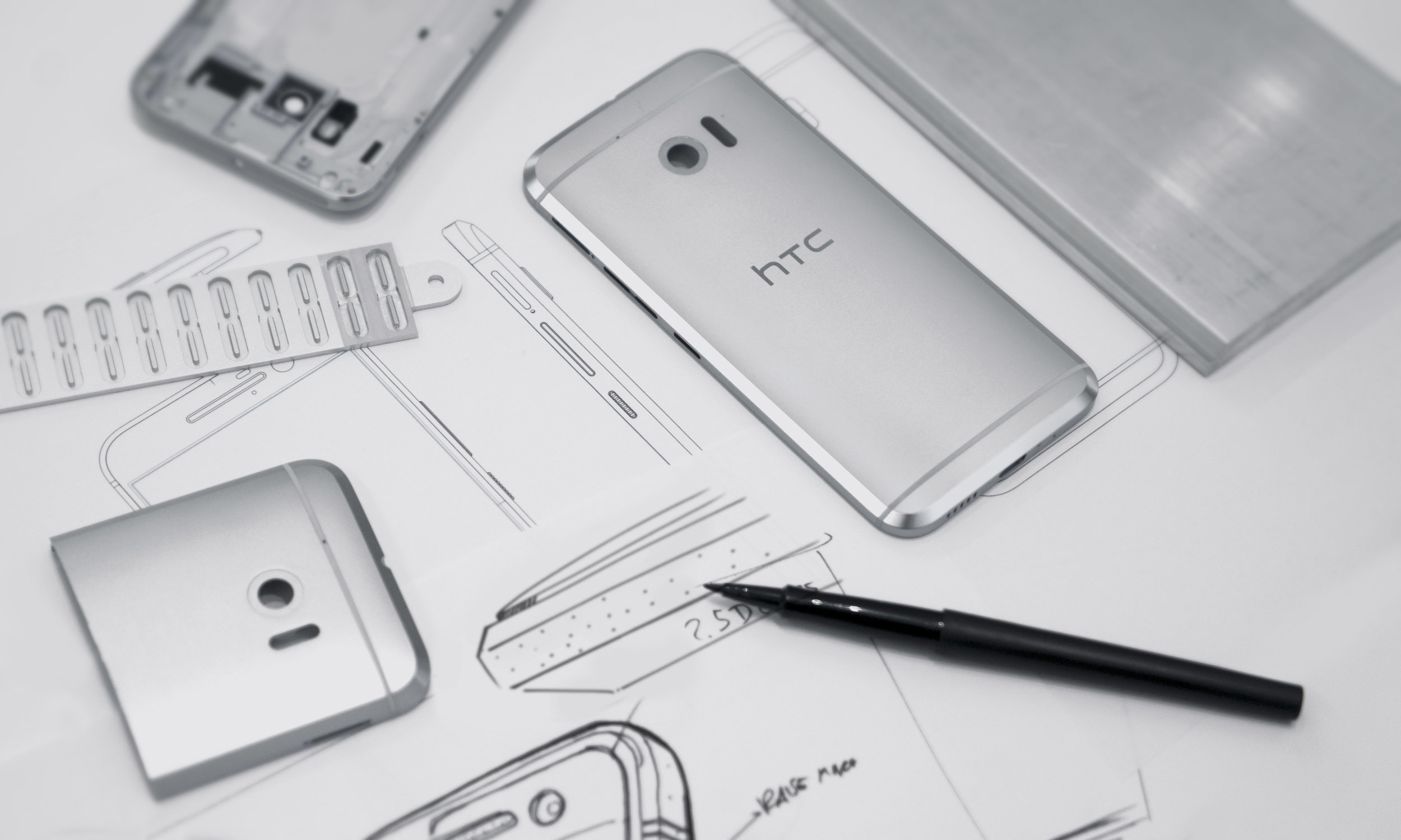HTC 10: a Deliberate Celebration of Metal
Design Story Series for HTC Blog





Welcome back to Design Story, where we spend time behind the design studio doors to discover how your favorite products are conceived and created. This time around is a special treat, as we finally learn more about the genesis of the HTC 10, after weeks of small teases leading up to the launch.
HTC’s highly regarded flagship phones have established a solid lineage of mobile device design and moved the state of the art further, from the HTC One M7 to the M9. This year, the company is making its biggest leap forward with the HTC 10, a differentiated design informed by years of perfecting the design and manufacturing processes. HTC’s design team gave us a tour of what makes the 10 stand out from other devices, including a look at the behind-the-scenes challenges encountered when creating it.
A new silhouette
Materials dictate people’s first impressions of a product, and in this area the HTC 10 literally shines. Wrapped in military-grade aluminum and finished with zirconium bead blasting for a premium feel and appearance, the new flagship is a deliberate celebration of metal.
“We wanted to make the 10 immediately recognizable from across the room,” said Hannes Harms, senior industrial designer. “To do that, we gave it a distinctive 3.3mm chamfer that runs around the outer edge and gives the phone a new, elegant silhouette.”
Creating the chamfer required tenacity and numerous iterations to get right. Designing the visual appearance was just the first step—the team also had to refine the process of manufacturing it. A single, precise movement removes the material that exposes the chamfer. Controlling tolerances on such a large surface is difficult, so HTC’s design team worked closer than ever before with the company’s engineers.
“If the cutter is too slow or too fast,” said Lawrence Fong, program manager, “it creates unacceptable irregularities in the metal.” The raw chamfer surface is then bead-blasted to create a satin finish that catches the light, but doesn’t distract the way a mirrored finish would.
There’s more to the 10’s design than its visual distinction. The chamfer accentuates the iconic curved back of earlier HTC models, which makes the phone comfortable in hand. That comfort is brought around to the front, as well. The glass is rounded along the edges to make an elegant transition from the metal, smoothly brushing the user’s face when making calls.
“When the first prototypes of the form came in, everybody expressed how nice it felt, how precise the feel in the hand was,” said Mathias Hintermann, industrial designer.
Two parts, that’s it.
One goal for this new flagship device was to improve the build quality and construction. In order to do that, the design team dramatically reduced the part count to just two pieces, metal and glass. No separate plastic parts get in the way. And fewer parts translate to smaller tolerances, and therefore a premium feel. The result is a consistently beautiful, crafted surface finish.
For the antenna breaks, which are integral to the metal unibody, HTC’s color specialists and resin chemists created new pigment formulas. “The goal was to blend the transition between the metal and composite materials as subtly as possible,” said Ten Arun, CMF (Color, Material and Finish) manager.
To maintain the integrity of the silhouette, the team also strived to create a perfectly symmetrical object. The external characteristics that matter most to customers are aligned along the center axis—the headphone jack is centered on top of the phone, and the USB-C port is centered at the bottom—enabling customers to easily find those spots without having to search for them.
The chamfer gesture continues into all of the 10’s small details. Buttons, camera trim, speaker openings and the USB-C port are all treated with a chamfer that complements the phone’s contour.
The power button, also made of aluminum, has a purposefully defined surface texture that makes it quickly identifiable at the faintest touch. Giving it the right texture that differentiates itself from the rest of the device was especially important. Aside from the screen, the power button is still the most important touchpoint on HTC’s phones—it’s the beginning and end of each interaction. The design team made at least 50 machined samples until the button achieved the perfect tactility.
All of those elements—materials, design, manufacturing and overall attention to detail—create in the 10 a silhouette that reflects the design team’s care and craftsmanship. Great teamwork and cross-collaboration gives HTC’s latest flagship a new and distinctive identity.
“I am very proud of our team’s creativity and the endless effort they put in to make 10 a reality,” said Catherine Kim, principal designer. “This project would not have been possible without continuous team collaboration with various disciplines throughout the development process.”
Credits
Byline: Jeff Carlson
Series Concept: Susan Burgess
© 2016 HTC Corporation. All designers and authors referenced herein were employed by HTC Corporation at time of publication.